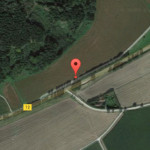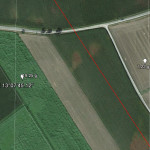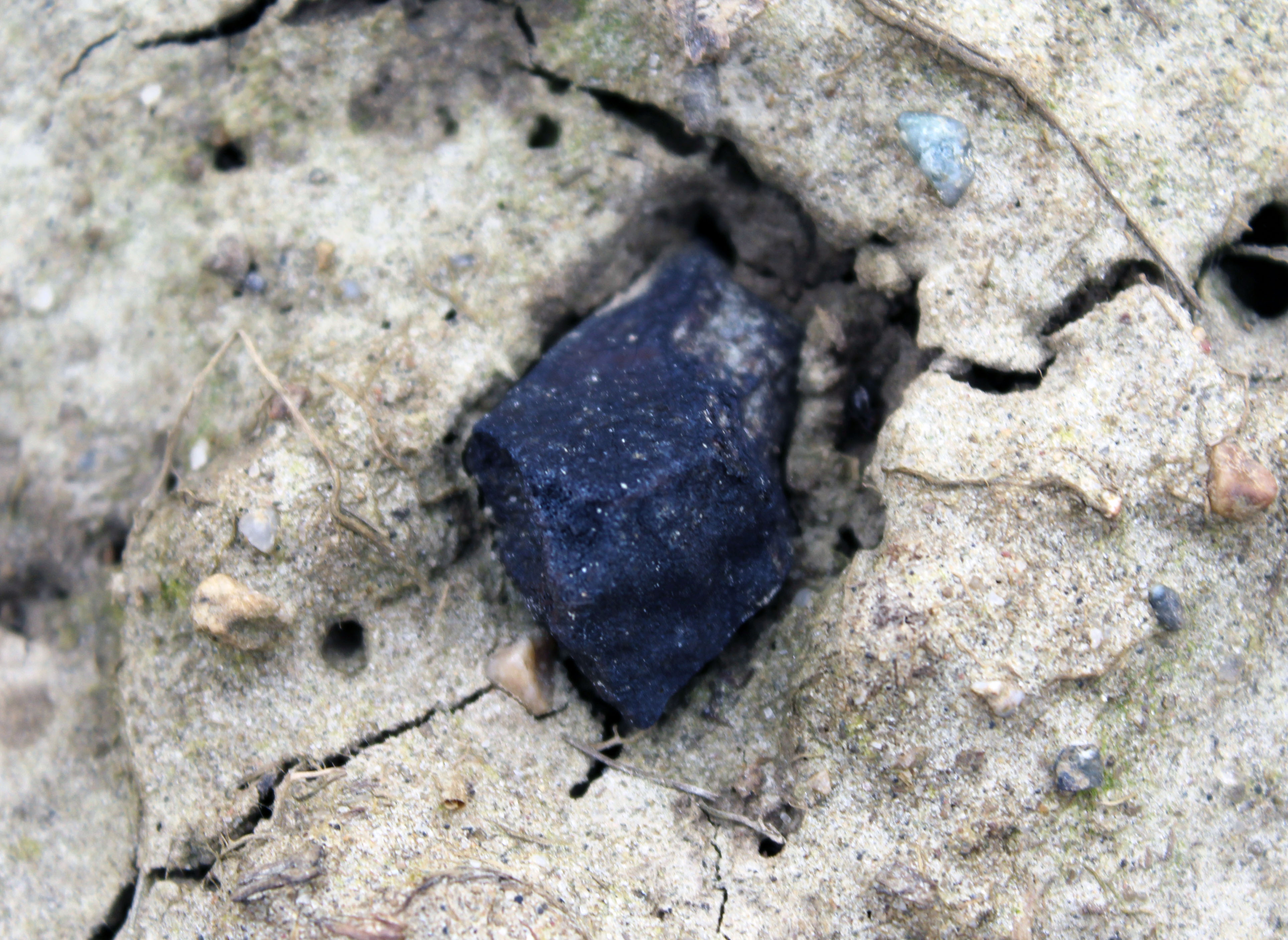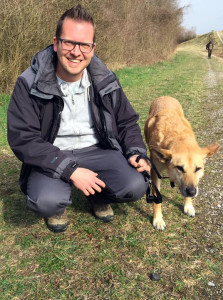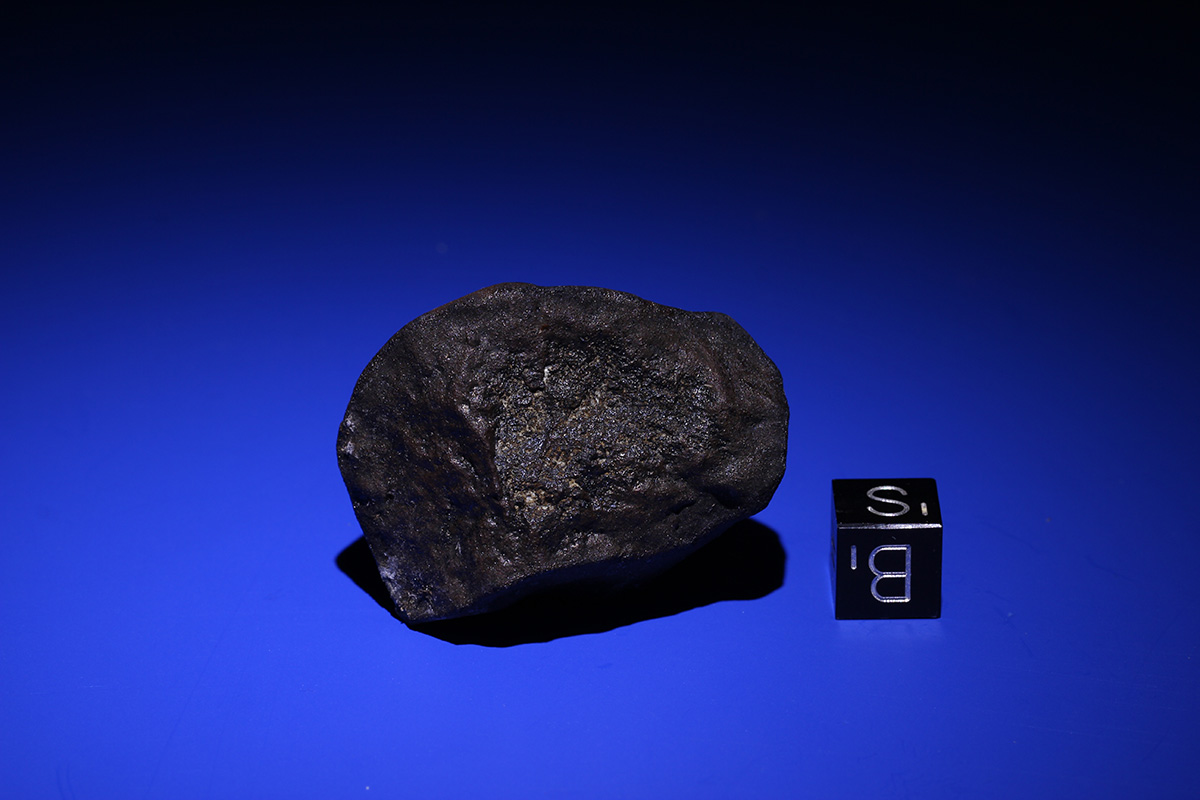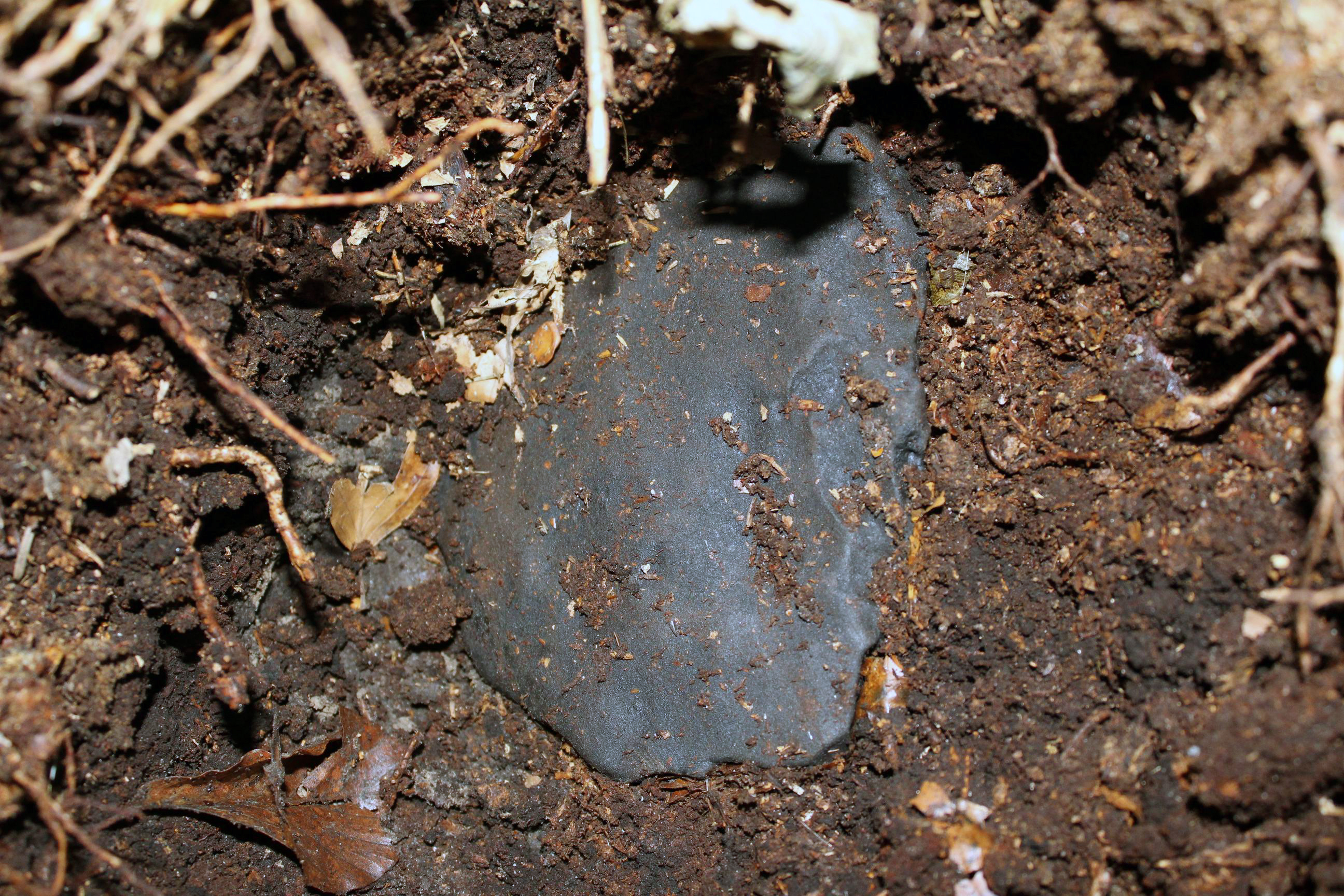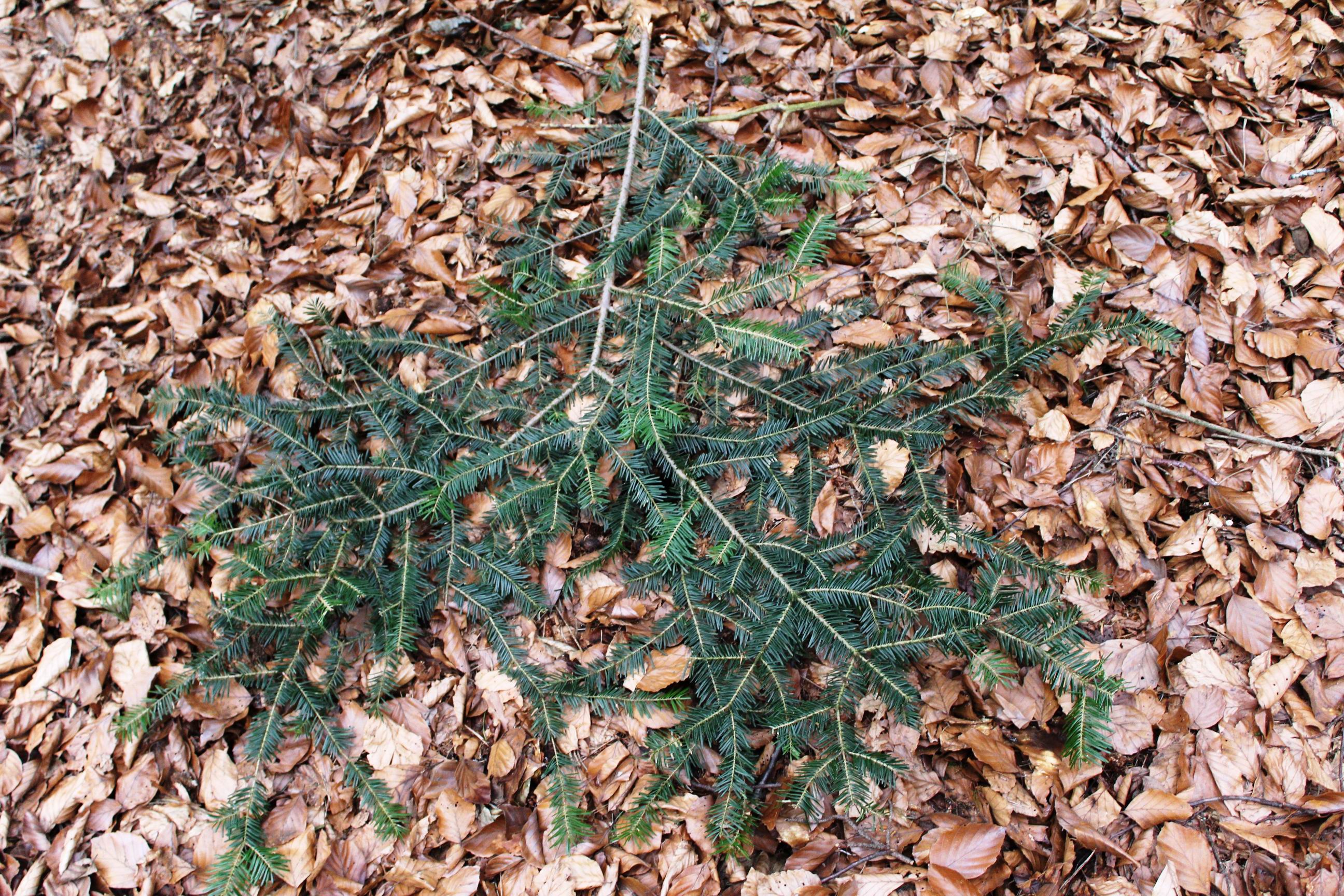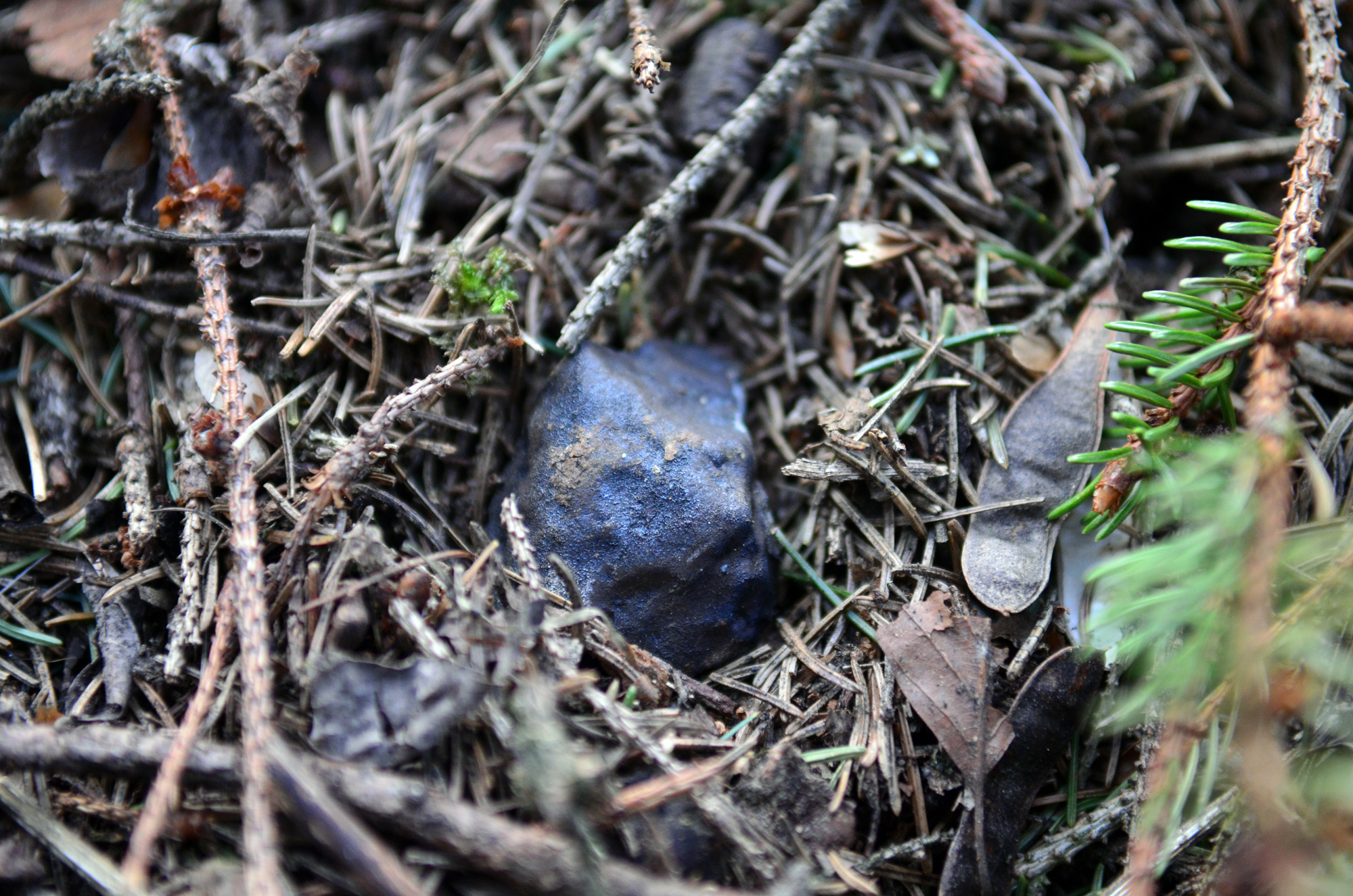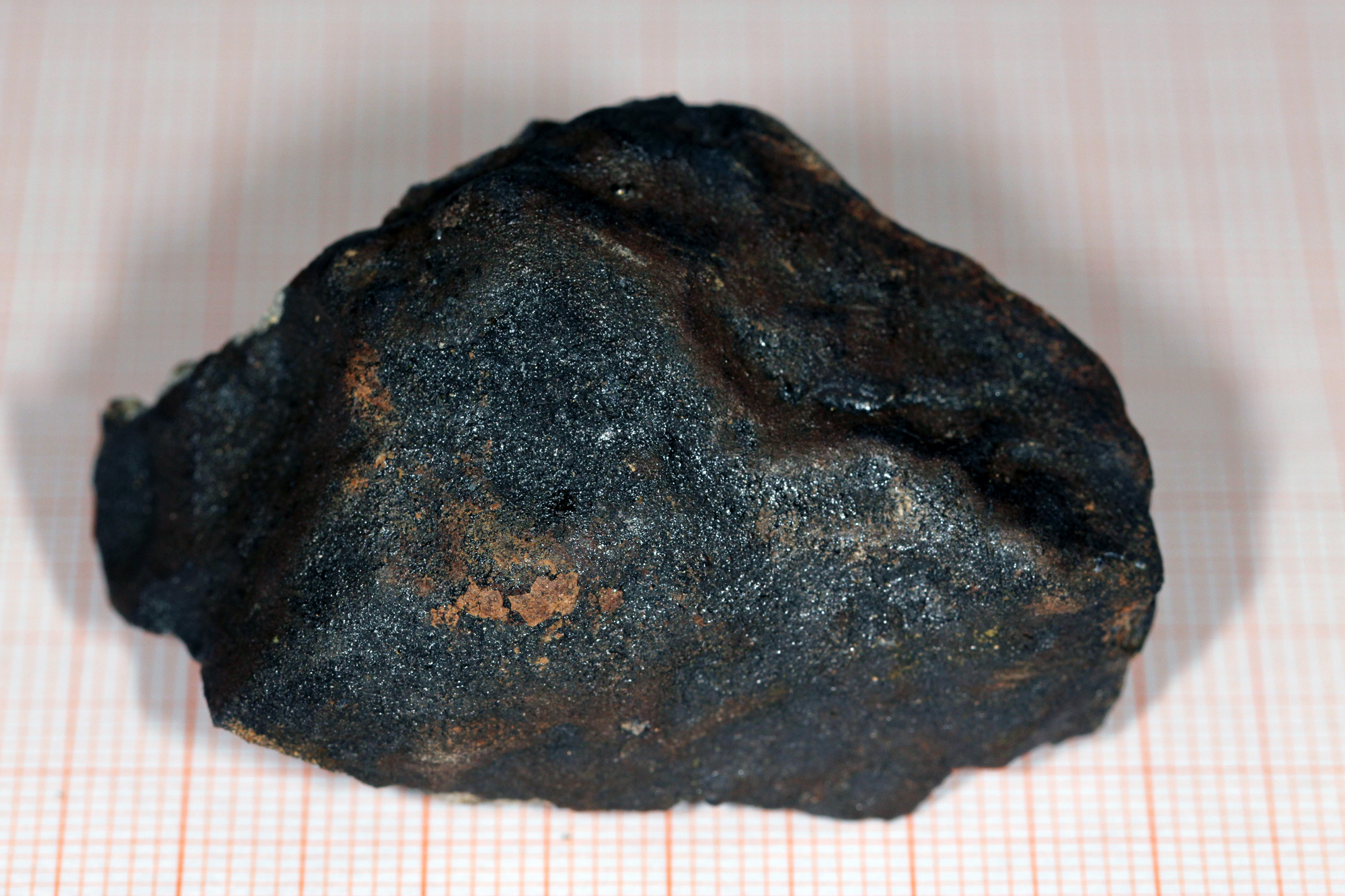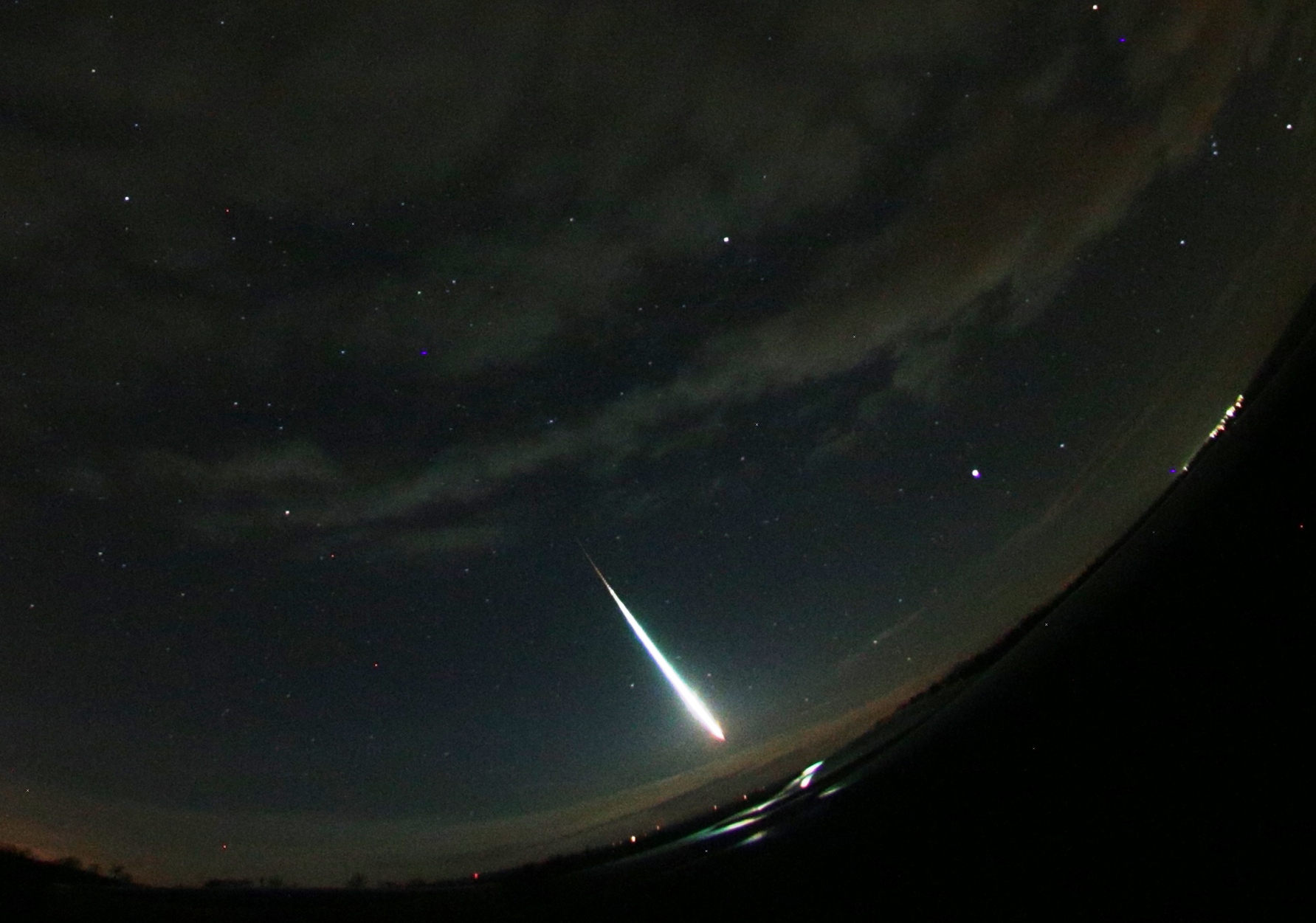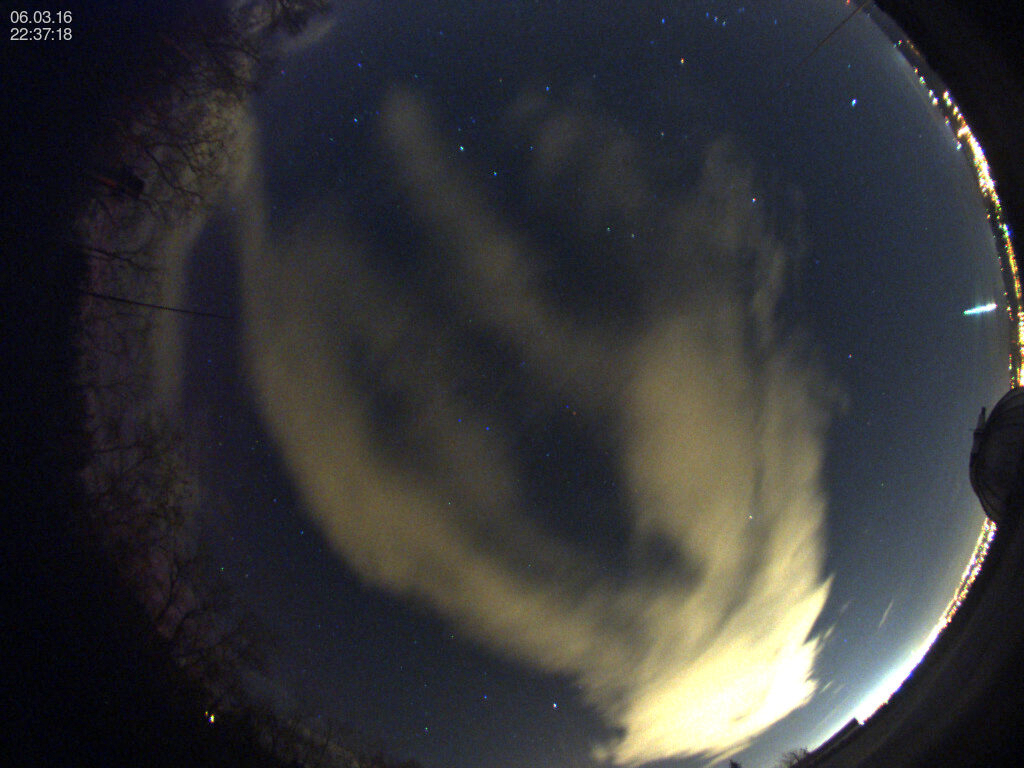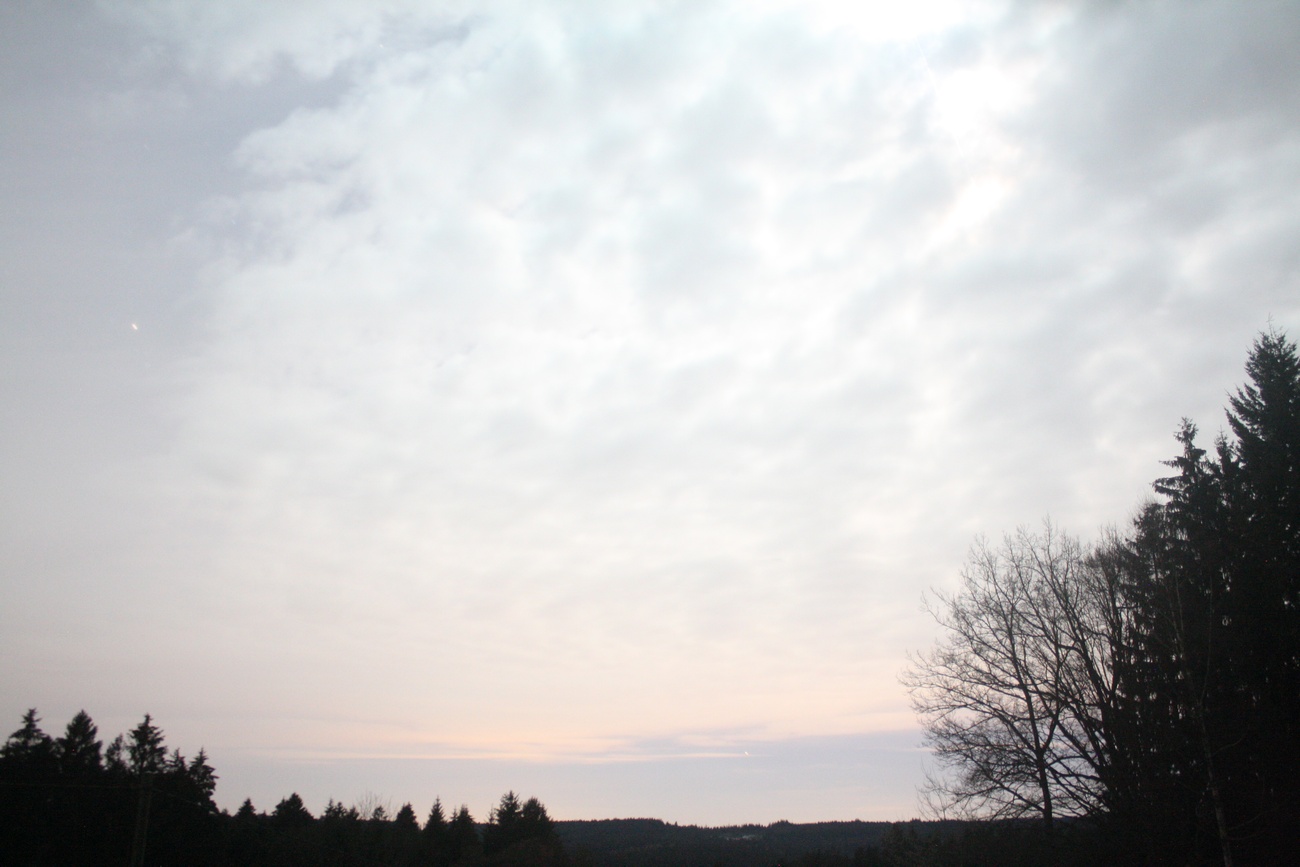STUBENBERG
Six meteorites (1473 g) recovered
between Stubenberg and Ering
(Bavaria, Germany)
Fall on 6 March 2016 at 21:36:51-56 UTC
The first find (March 12)
The first meteorite (LL6, S3, breccia) of the fall on 6 March at 9:36:51 p.m. UTC was found on 12 March at 12:05 p.m. CET. After only two hours and five minutes of searching the meteorite enthusiast Michael Krippner from Austria found the first meteorite fragment, weighing 6.21 grams, at location 48°17’42.7″N, 13°06’58.9″E at the edge of a field near a small road in the centre of the calculated strewnfield in the municipality Ering (Bavaria, Germany). The found specimen does probably stem from the second or third fragmentation event of the meteoroid. The strewnfield had been meticulously calculated by the Czech astronomer Dr. Pavel Spurný during the five days following the fall. M. Krippner was a member of a twelve-person Austro-German search team of ambitious amateurs and professionals, lead and coordinated by Dieter Heinlein (German Fireball Network), which had spontaneously gathered within hours as soon as the data of the calculated strewnfield provided by P. Spurný were available on March 11. After the first fragment 12 additional fragments (39.38 grams) of the meteorite, which had fragmented on impact, could be collected on March 12 and March 13. The largest fragment weighing 23.58 grams was found by Sabine Gumpenberger.
During the days after the fall and independently of P. Spurný, Dr. Karl Wimmer had been calculating the strewnfield based on publicly available photographic recordings from Germany and Austria (e.g. from Radebeul and Fornach), which were of lower image quality compared to the ones of the Czech camera network. Wimmer had nevertheless calculated a strewnfield which turned out to overlap rather precisely with the one calculated by Spurný. On March 12 Wimmer was equally searching for meteorites a few hundred meters further south in the strewnfield when he noticed the Heinlein search team. Once the first meteorite was found Wimmer met the Heinlein team and performed on-location measurements of a found meteorite fragment with a magnetic susceptibility field meter. The results plotted in the field of LL chondrites.
One 1.6 gram fragment found by Ralph Sporn and Martin Neuhofer was provided to Pavel Spurný for analysis and classification which was performed by Dr. Jakub Haloda. Another fragment (1.3 g) for analysis was provided to Prof. Addi Bischoff and Samuel Ebert of the Institut für Planetologie at the Westfälische Wilhelms-Universität Münster (WWU). Both fragments were independently classified as LL6 breccia and confirmed Dr. Wimmer’s first field measurements from March 12. The provisional name ‘Stubenberg’ was attributed to this fall with the main mass having been found in the municipality of Stubenberg and the other five specimens found in the municipality of Ering.
On 17 March Dr. Pavel Spurný of the Astronomical Institute of the Czech Academy of Sciences (AsÚ) and Prof. Addi Bischoff of the Westfälische Wilhelms-Universität Münster (WWU) published two press releases ( Dr. P. Spurný / Prof. Addi Bischoff) with details about the calculated strewnfield, the meteoroid’s trajectory, and its former heliocentric orbit.
On 18 March a 14th crusted fragment (2.29 g) of the first meteorite was found at the original fall location by Dennis Harries and his search team of mineralogists of Friedrich-Schiller-Universität Jena. In the evening of March 19 Dr. Wimmer performed magnetic susceptibility measurements of this fragment with his field meter. The results plotted in the field of LL chondrites as well. All together 14 fragments of the first meteorite with a total weight of 47.88 g could be recovered by ten different finders. Until 15 April 2016 six meteorites with a total weight of 1473 grams had been found.
Most larger meteorites are thought to have fallen in the dense forest east-southeast of Stubenberg. The terrain in the forest is often difficult to search: a thick layer of foliage or moss, steep slopes, hedged forest plantation areas, and dense vegetation. Many fields in the calculated strewnfield were searched by various searchers from Germany, Austria and the Czech Republic, but plowing, sowing and fertilising had already started making finding more meteorites on the fields much more difficult or virtually impossible.
The second and third find (March 23)
On March 27 it was reported by Dieter Heinlein in the German meteorite forum that a second and third meteorite were found in shallow impact pits on two fields in the very east of the calculated strewnfield on March 23. The second meteorite (7.21 g) with a broken edge (0.45 g) was found at location 48°17’44.9″N, 13°07’57.7″E and the third complete specimen (19.24 g) at location 48°17’43.9″N, 13°07’45.8″E. The found specimens do probably stem from the second or third fragmentation of the meteoroid. The finders are Ralph Sporn and Martin Neuhofer from Upper Bavaria. They found these two specimens after they had systematically searched numerous fields of the calculated search area for several days. They communicated the exact find coordinates to D. Heinlein in an exemplary manner soon after the find. Sporn and Neuhofer also found Neuschwanstein II on May 27, 2003.
[wc_row][wc_column size=”one-half” position=”first”] [/wc_column][wc_column size=”one-half” position=”last”] [/wc_column][/wc_row]The fourth find (March 26)
On March 26 at 3 p.m. a second and complete specimen (42.43 g) was found by the German meteorite enthusiast Moritz Karl in the south of the strewnfield on the German bank of the river Inn at location 48°17’42.86″N, 13° 6’59.25″E. In an exemplary manner the exact find coordinates were communicated to D. Heinlein immediately after the find. The specimen does probably stem from the first atmospheric fragmentation of the meteoroid.
[wc_row][wc_column size=”one-third” position=”first”] [/wc_column][wc_column size=”one-third”] [/wc_column][wc_column size=”one-third” position=”last”] [/wc_column][/wc_row]The 1320 g main mass (5th find) (April 1)
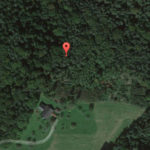 On April 14 Dr. Pavel Spurný published a press release announcing that on April 1, after about 400 hours of systematic search, Ralph Sporn and Martin Neuhofer found a 1320 g specimen embedded about 15 centimetres deep in the beech leaf-covered forest soil at location 48°18’20.9″N, 13°05’36.5″E , 515 metres a.s.l. and about 95 metres north-northeast of Kammerhub in the Hösling parcel of the Entenmoos forest at the eastern fringe of the municipality of Stubenberg. The meteorite was covered by a branch of a silver fir which had probably been hit by the falling meteorite and fell directly on the impact pit.
On April 14 Dr. Pavel Spurný published a press release announcing that on April 1, after about 400 hours of systematic search, Ralph Sporn and Martin Neuhofer found a 1320 g specimen embedded about 15 centimetres deep in the beech leaf-covered forest soil at location 48°18’20.9″N, 13°05’36.5″E , 515 metres a.s.l. and about 95 metres north-northeast of Kammerhub in the Hösling parcel of the Entenmoos forest at the eastern fringe of the municipality of Stubenberg. The meteorite was covered by a branch of a silver fir which had probably been hit by the falling meteorite and fell directly on the impact pit.
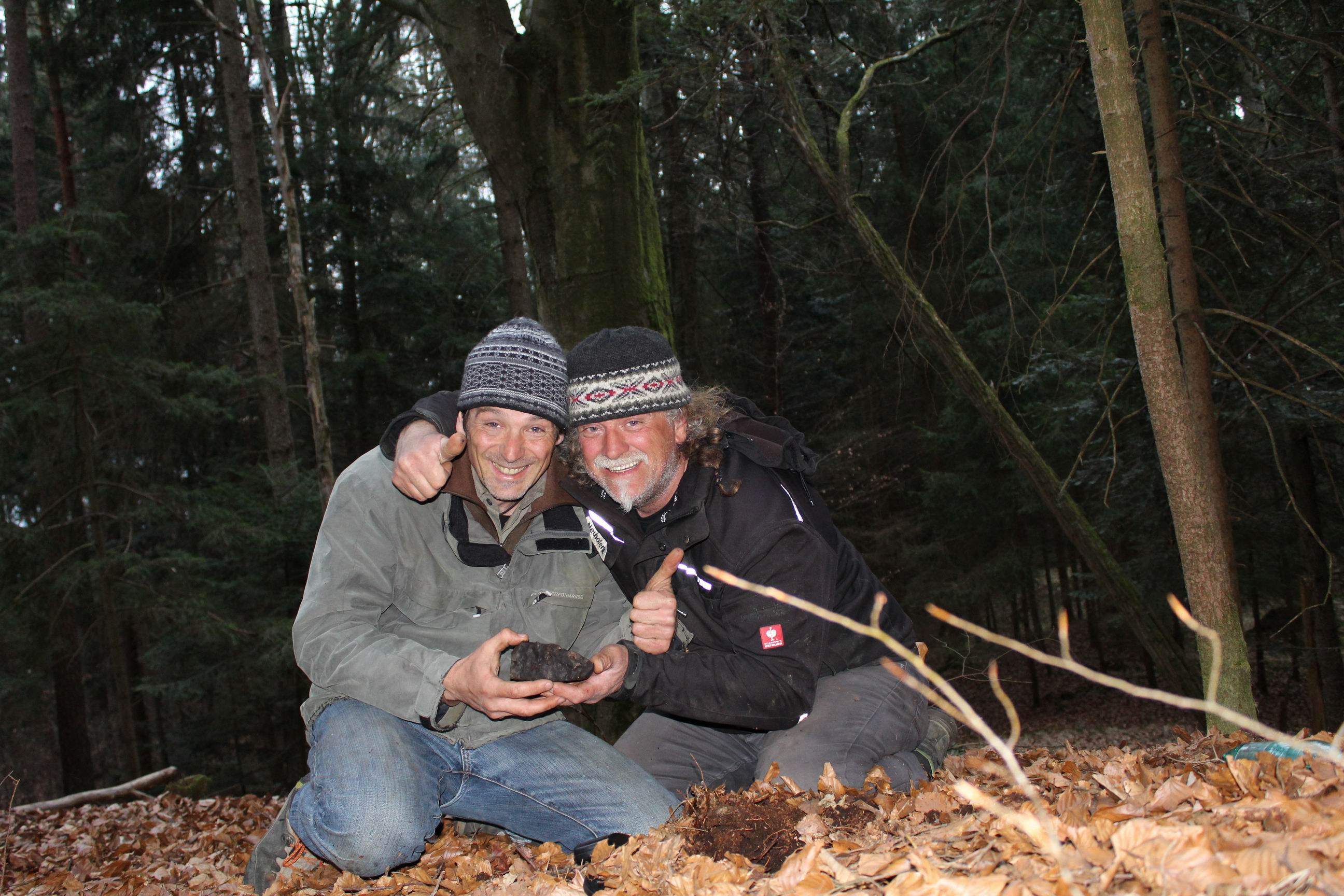
R. Sporn and M. Neuhofer just after the recovery of the 1320 g Stubenberg main mass (Photo: R. Sporn, M. Neuhofer)
[/wc_column][/wc_row]
On April 12 Dieter Heinlein presented the 1320 gram main mass to Dr. Pavel Spurný, whose precise calculation of the strewnfield in combination with Sporn and Neuhofer’s remarkable search efforts made the recovery of the large mass possible. The Stubenberg main mass, the dug out impact pit and the other known specimens and fragments of the fall were presented in a special exhibition at The Munich Show 2016 (28-30 October 2016).
The sixth find (April 3)
On April 5 it was reported by Dieter Heinlein that in the morning of April 3 a sixth meteorite fragment (~ 4.5 x 3.5 x 2.5 cm) with two fractured faces weighing 35.89 g was found by Dennis Harries at location 48°17’53.64″N, 13°05’59.90″E on a footpath on a steep hill in the forest south of Bertenöd. The find was made on the last day of a four-day search in the strewnfield and the exact fall coordinates were communicated to D. Heinlein in an exemplary manner. The found mass does probably stem from the first or second fragmentation of the meteoroid. The meteorite has been cut to enable analyses. The remaining mass of Stubenberg #6 weighs 25.96 grams now.
[wc_row][wc_column size=”one-third” position=”first”] [/wc_column][wc_column size=”one-third”] [/wc_column][wc_column size=”one-third” position=”last”] [/wc_column][/wc_row]The meteoroid
The luminous trajectory of the bolide (EN060316) was at least partially recorded by six cameras (Churáňov, Kocelovice, Kunžak, Ondřejov, Růžová and Svratouch) and photometers of the Czech part of the European Fireball Network. The data provided enough information to calculate the meteoroid’s pre-impact heliocentric orbit, its atmospheric trajectory, and the potential fall area of meteorites.
According to P. Spurný’s calculation a meteoroid of about 600 kg and a diameter of 70 cm was recorded entering the atmosphere with a speed of 14 km/s in a steep angle of 70 degrees at a height of 86 km near the Austrian city Mattighofen, heading north. The bolid’s brightness increased rapidly and reached its maximum magnitude of -15.5 . The luminous trajectory, containing up to four fragmentation events, lasted for about 5.5 seconds. It was about 72 km long and ended at a height of about 17.6 km above the ground in the east of Braunau am Inn, Austria. The meteoroid was calculated by P. Spurný et al. to have originated in the inner asteroid belt. It had a very low inclined orbit with the following parameters: semimajor axis (AU): 1.525 ± 0.010; eccentricity: 0.395 ± 0.004; perihelion distance (AU): 0.9235 ± 0.0006; aphelion distance (AU): 2.127 ± 0.020; argument of perihelion (°): 221.02 ± 0.03; longitude of ascending node (°): 346.5197; inclination (°): 2.07 ± 0.03; orbital period (years): 1.884 ± 0.019. All angular elements are given in J2000 equinox.
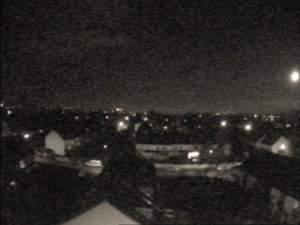
First published photo by Tobias Hörburger from Regensburg-Prüfening (49.01 N, 12.04 E) ?? showing the bolide in a southeastern direction (AZ ~135°) / Photo: Tobias Hörburger
The bolide recorded from Lindenberg (Mark), Brandenburg, Germany at 21:36:52 UTC (Video: André Knöfel)
Video of the AllSky-Cam of Martin F. from the Astroclub Radebeul e.V. (E13°37´20″ N51°06´59″)
Scientific literature
The Stubenberg meteorite—An LL6 chondrite fragmental breccia recovered soon after precise prediction of the strewn field
Bischoff, A., Barrat, J.-A., Bauer, K., Burkhardt, C., Busemann, H., Ebert, S., Gonsior, M., Hakenmüller, J., Haloda, J., Harries, D., Heinlein, D., Hiesinger, H., Hochleitner, R., Hoffmann, V., Kaliwoda, M., Laubenstein, M., Maden, C., Meier, M. M. M., Morlok, A., Pack, A., Ruf, A., Schmitt-Kopplin, P., Schönbächler, M., Steele, R. C. J., Spurný, P. and Wimmer, K.
Meteoritics & Planetary Science. doi: 10.1111/maps.12883 abstract
TWO VERY PRECISELY INSTRUMENTALLY DOCUMENTED METEORITE FALLS: ŽĎÁR NAD SÁZAVOU AND STUBENBERG – PREDICTION AND REALITY.
P. Spurný, J. Borovička, J. Haloda, L. Shrbený and D. Heinlein
79th Annual Meeting of the Meteoritical Society (2016) [#6221] abstract
THE STUBENBERG (BAVARIA) ORDINARY CHONDRITE BRECCIA: THE LATEST GERMAN METEORITE FALL
S. Ebert and A. Bischoff
79th Annual Meeting of the Meteoritical Society (2016) [#6137] abstract
On 12 May 2016 Stubenberg was officially registered as LL6 (S3/W0) in the Meteoritical Bulletin Database: STUBENBERG
“Stubenberg 48°17.7’N, 13°7.0’E
Bayern, Germany
Confirmed fall: 2016 Mar 6
Classification: Ordinary chondrite (LL6)
History: (Pavel Spurný, CzAS). A very bright bolide was observed by thousands of eyewitnesses over Austria, Germany and the Czech Republic on March 6, 2016, at 21:36:51-56 UT. It was recorded photographically and photoelectrically by digital all-sky fireball observatories at six Czech stations of the European Fireball Network. A digital photographic spectrum of the bolide was also obtained. Based on these instrumental data, precise results on atmospheric trajectory, heliocentric orbit, and fragmentation history were quickly determined. From this analysis it was evident that this event likely resulted in multiple stones falling: the impact site was modeled and sent to German colleagues four days after the fall. All of the meteorites were found in the predicted location for a given mass.
Physical characteristics: (D. Heinlein). A total mass of 1.473 kg was recovered within the predicted fall site. The largest fragment has a mass of 1.320 kg and was found in a 14-cm-deep impact pit. The remaining 153 g of material consists of several pieces resulting from five different fragments. The first meteorite, 48 g, was found six days after the fall: it was broken into many pieces after hitting a hard surface. The other recovered fragments have masses of 42, 36, 19, and 8 g.
Petrography: (S. Ebert and A. Bischoff, IfP). Based on the study of the thin sections, Stubenberg is brecciated. Only highly recrystallized fragments (type 6) were observed, having only very rare, indistinct chondrules. Plagioclase (some >100 μm) and olivine show undulatory extinction, and the olivines show distinct sets of planar fractures indicating that the rock is weakly shocked (S3). Opaque phases include metals (kamacite, taenite), troilite, and chromite. Other accessory phases include Cl-apatite and merrillite. Several shock veins cross the meteorite.
Geochemistry: (S. Ebert and A. Bischoff, IfP). The mean composition of olivine is Fa31.4±0.3 (Fa30.5-32.2, n=54). The low-Ca pyroxenes and Ca-pyroxenes have mean compositions of Fs25.4±0.3 (Fs24.8-26.1, n= 43) and Fs11.2Wo41.4 (n=7), respectively. Mean plagioclase composition is An11.1±0.4Or5.5±1.2 (An10.3-12.1, n= 42). Kamacite has mean Ni and Co concentrations of 3.9 and 6.1 wt%, respectively (n=8). The taenite composition is variable, with Ni content varying from 41.9 to 48.2 wt% (mean: 44.3 wt% Ni, ~1.8 wt% Co, n=38).
Classification: LL chondrite breccia (LL6, S3, W0)
Specimens: Type Specimens: 20.1 g, IfP; the main masses are with the finders.“
MEDIA
Radio
Nach Fund von Meteoritenresten. Goldgräberstimmung in Stubenberg
(Bayern 1, 21 March 2016)
AUDIO
Meteoritenforscher Dieter Heinlein
D. Heinlein is talking (in German) about meteorites, including the recently found Stubenberg meteorite
(BR Heimat – Habe die Ehre! on Bavarian radio (BR), 1 June 2016)
AUDIO
Press
Stubenberg – Ein neuer Meteoritenfall in Niederbayern
by Dieter Heinlein
in Sterne und Weltraum, 8/2016, pp. 40-45
available online * on 12 July, 2016
PDF DOWNLOAD (OPEN ACCESS)
(The PDF is meant for personal use only and must not be shared or published elsewhere without permission of the publisher.)
Video
‘Stubenberg’ at the Munich Show 2016
Abendschau, BR TV, 28 October 2016
TV report about the Stubenberg meteorite
Meteorit in Niederbayern – Endlich ein großes Stück vom Himmel
(BR3 Television / April 26, 2016 / 17:55 CEST)


